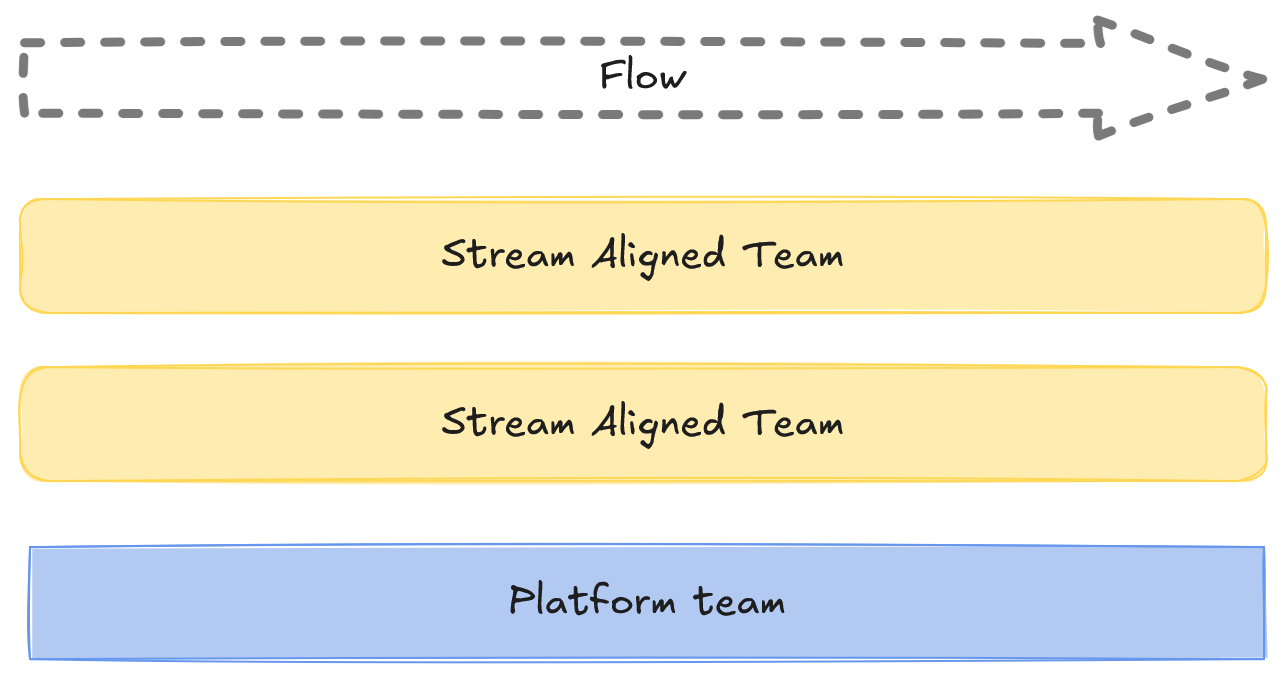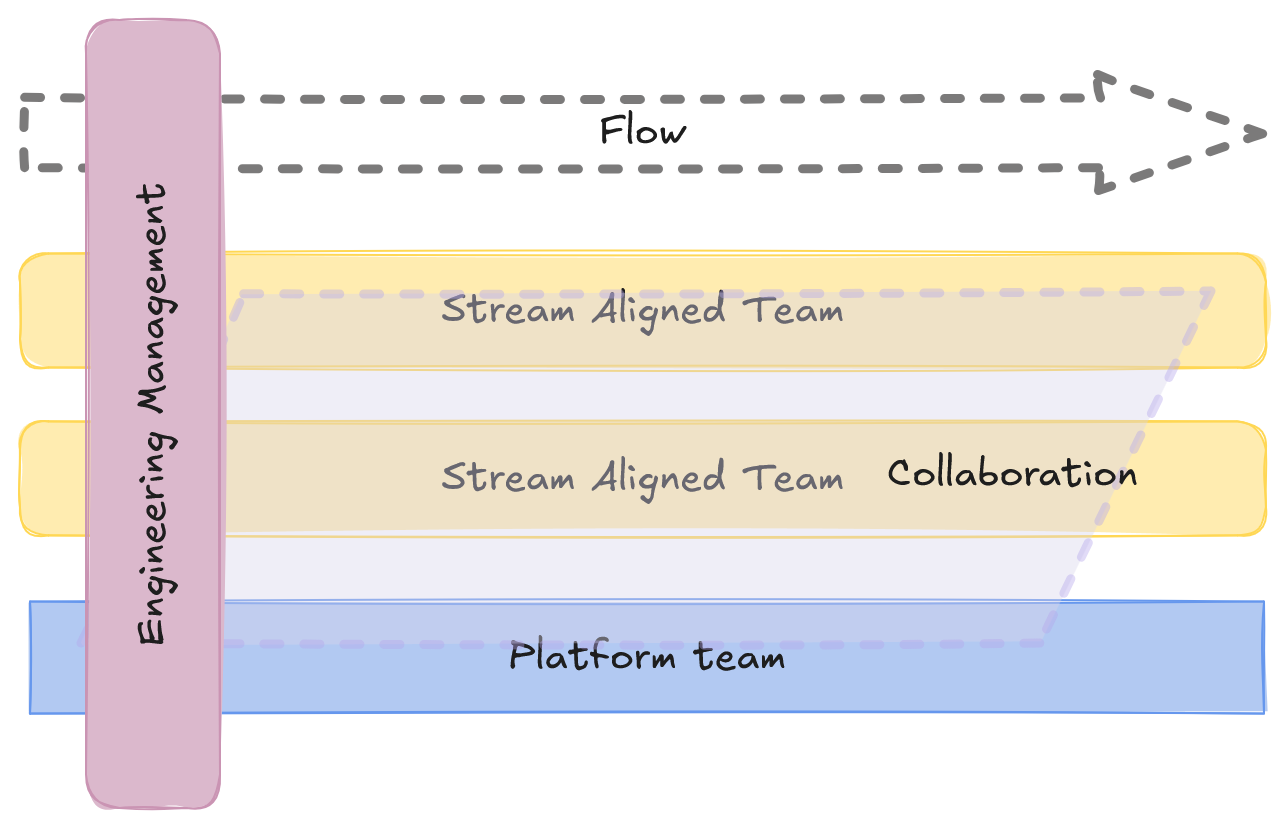ℹ️This post assumes that you are familiar with Team Topologies.
You’re an engineering manager of a tribe with three teams. Two stream-aligned teams and one platform team.
At some point, you start noticing critical areas of improvement.
The platform team is under a huge pressure to deliver features because they are blocking stream-aligned teams. Stream-aligned teams lack the proper structured processes, and are making the whole problem even worse.
We wanted to achieve a fast flow of change, but we are seeing that all teams are constantly collaborating to ship the features.
You see the product having some delays, we identify a lack of quality on the shipped product. We understand that it can mean a:
Not well-defined architecture.
Lack of testing and other QA practices.
Missing ownership due to shared responsibilities between teams, making it hard to own a deliverable end to end.
Your team members share that the testing process takes a lot, and it is a bottleneck. The platform is supporting all the stream-aligned teams needs, and they are unable to handle any more work.
At the same time, you’re under pressure to deliver features. You have a budget available, and your manager gave the OK to spend the money with flexible talent, like external consultants or freelances, if you consider it necessary.
You have to take action.
Seeing a problem and do nothing isn’t good for your job security. It’s better to spend money you have available, and try to do something, and fail, than do nothing and still fail, isn’t it?
So, what do you do? How is your culture? What is the acceptable decision?
Let’s hire a set of consultants to help us on the bottleneck, because we want to optimize, the consultants we will be shared between teams.
We hire them temporally to support us on our process.
They are tasked with two goals:
Unblock our stream of value.
Train our people.
And all of a sudden, they have been with us for two years. The process didn’t improve, the ownership isn’t there, and the pressure to deliver faster, and better keeps increasing.
Indeed, they are asking more budget to add more people because the processes started to become slow again, and we need more business agility.
Yet, because in your organization you made the decision that is more acceptable by your culture, you’re doing a good job.
But, are you really doing it, or you made the easiest decision?
Why was it the most accepted decision?
Because you used your budget to add people to the problem.
But it made the problem worseBecause you solved a problem with people, because you’re a manager.
But you know about the processes, and architectural problem. That wasn’t addressed in your approach of hiring external consultants.Because you added a new step into the process, and you made them responsible for the quality of the whole product.
But the product is complex, they are unable to attend the whole team’s needs, the same problem as the platform team had, and they are adding more lead time as more rework is needed.You added more meetings. Shame on you!
Which isn’t the most accepted decision, but an alternative that addresses the problems you identified? Engineering management acting as Enabling Team
You, as part of the engineering management team, have identified the team gaps, the problematics, and adding another step into the problem only makes it worse. You weren’t addressing the root cause.
But instead, see yourself as an enabling team.
You will upskill your teams on the areas that you identified while you gain another point of view. The challenges your team faces.
Being closer to the teams, helping them unlock the necessary change, and facilitate different workshops, trainings, and helping that the new ways of working to stick will unlock a lot of the problematics that you, and your teams are facing.
Why don’t we see management as an enabling team?
Some organizations design the manage role as a people only role.
Missing all the potential of engineering leadership, which it is the combination of people management and technology. We can understand it as the combination of:
People and processes.
Technology, such as architecture.
If managers can only influence people, and maybe processes, they will need to act on that dimension. Making their solution space limited and suboptimal.
By understanding our engineering management teams as people, processes, and tech, we enable new possibilities.
Make yourself the next question:
Why do you need to hire a trainer for unit testing if you can do the training?
What is preventing you as a manager of managers to be involved in the teams?
Is it that you are too busy for this work? Why? Is the other work more important, or it is unnecessary bureaucracy?
Stop for a moment, and understand what’s preventing you to do the most sensible actions.
Read more at Team Topologies Newsletter
Update May 12th 2025.
I wrote an extended version of this post as an article for Team Topologies. You can read the full article using the following link, https://www.linkedin.com/pulse/leadership-enabling-team-team-topologies-5icbf/.







